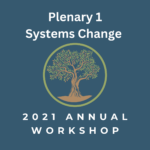By Rakhi Mehra rakhi@mhscitylab.org
In India, 8 people die every day due to a building collapse according to estimates from the National Crime Bureau of India. The unfortunate fact is that over 80% of low-income households find affordable habitat in informal settlements, continue to build and live in non-engineered structures. As some have observed, “earthquakes don’t kill people, the buildings do”.
10 years ago, mHS CITY LAB, an Indian start-up inter- disciplinary social enterprise, think-tank and implementing organization with a human-centered design approach, started its quest to design and pilot innovative, scalable solutions to foster the development of resilient and inclusive cities. It began with the mis- sion for cities to improve quality of self-built housing.
Households were offered a bundled product including access to a home-upgrade loan through a partner micro finance institution with mandatory technical assistance. While this innovative housing finance faced challenges regarding property rights, as well as legal and policy obstacles, it was eventually able to secure the needed authorities and began scaling outreach with the support of a US$ 100 million World Bank projects (See video of Low Income Housing Finance Program, World Bank India).
Scaling door-to-door technical assistance on demand to communities that self-build housing proved to be operationally prohibitive and required a serious rethink on roles and modes of delivery. mHS opted for provision of last mile housing support services through a digital platform called NEEV that provides customized inputs, such as estimates, bill of quantities, and construction manuals that can be co-created with, and SMS’d to, the end user. Adoption of digital platforms for housing was met much skepticism, especially from the technical community, on the grounds that the presence of a certified engineer or architect is hard to replace. Who shares liability? How does one trace and certify quality? Is empowerment through access to information sufficient or is this in the domain of regulation? How can we measure impact? These are the questions mHS CITY LAB seeks to answer. For more information see www.mhscitylab.org.


